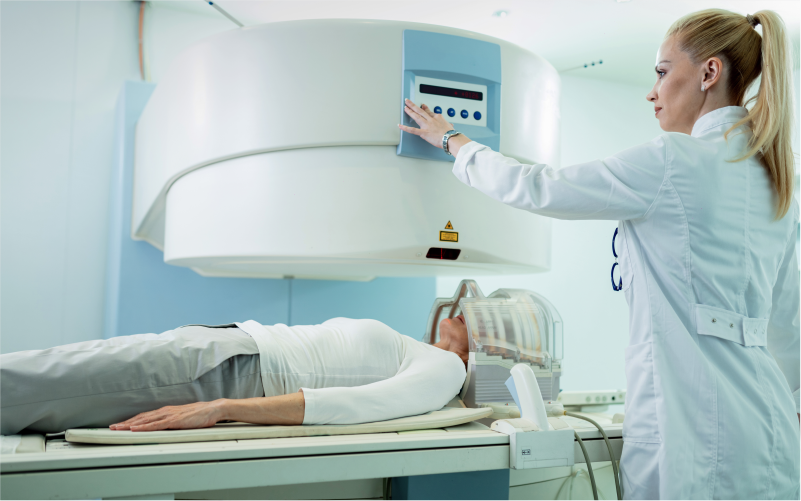Radiation therapy
Radiation therapy, or radiotherapy, is a cancer treatment that uses high-energy radiation to kill cancer cells and shrink tumors.
The radiation may be delivered externally or internally.
External radiation therapy
External beam radiation therapy is the most common type of radiation therapy. It uses a linear accelerator machine to deliver a high dose of radiation to the affected area. The device aims the radiation beams at the tumor from different angles to minimize damage to healthy tissue. Treatment is usually given five days a week for several weeks.

Internal radiation therapy
Internal radiation therapy, or brachytherapy, involves placing radioactive material inside the body near the tumor. This allows a higher radiation dose to be delivered to the tumor while minimizing exposure to healthy tissue. The radioactive material may be in the form of seeds, wires, or tubes placed inside the body for a short time.
Radiation therapy can cause side effects, such as fatigue, skin irritation, and nausea, but these usually go away once treatment is completed. In rare cases, radiation therapy can cause long-term side effects, such as secondary cancers or organ damage. The risk of side effects depends on the type of radiation therapy, the dose, and the tumor’s location. Your healthcare team will work with you to manage any side effects and monitor your progress during and after treatment.







